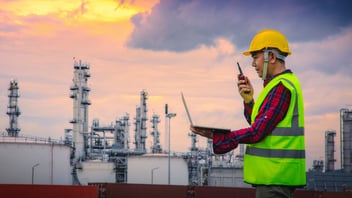Falling in the workplace is serious business. Fall protection is continuously one of the most frequently cited OSHA violations. OSHA has actually increased the fine amounts for these violations because of the severity—many workplaces are found with repeat violations despite the risk and the amount of annual fall-related injuries.
Multiple contractors have faced fines exceeding $100,000 in recent years due to lack of fall protection and training (source). The phrase “don’t be another statistic” may be a little overused, but you really don’t want to be cited as a company responsible for one or more workplace fatalities. Fall protection standards are enforced to keep employees safe and to avoid unnecessary harm in the workplace.
OSHA’s Requirements
Employers are required to protect employees from fall hazards by installing safety guards and barriers for all overhead platforms, elevated stations, and openings in the floors or walls. For general industry workplaces, the minimum elevation required for fall protection is only four feet! It may not seem like a dangerous height on an average day, but falls can cause a lot of harm—even from minimal heights—in an unlucky situation.
Fall Protection
-
Fall protection must be provided for anyone working above or around dangerous equipment and machinery—no matter the height or industry.
-
Guardrails and toe boards must be used around all floor openings and elevated platforms, as well as any machine or equipment that employees can fall on or into.
-
Employers must provide other types of fall protection as it relates to the specific work area, such as safety nets, stair railing, hand rails, and safety harnesses.
General Safety
By following even the general requirements from OSHA, workplace falls can be minimized:
-
Workplaces must be free of known dangers. It is the employer’s responsibility to ensure that any known dangers are taken care of so that employees can work in a safe environment.
-
All floors must be kept clean and dry as much as possible to minimize the risk of slips, trips, falls, and other accidents.
-
Personal protective equipment must be provided by the employer at no cost to the employees. Necessary safety equipment is always the responsibility of the employer.
-
Training must be provided to all employees covering on-the-job hazards in a language that they can understand.
To learn more about fall protection standards, this information and more can be found on OSHA’s website.
How Do You Measure Up?
Whether your workplace is in desperate need of a cleanup and training or you just want to inspect and improve an already safety-conscious environment, take a few minutes to refresh yourself and your team on the fall protection requirements. It’s a great idea to revisit safety information periodically so that everyone can be reminded that each safety measure has an important purpose.
Help keep your employees safe by being aware of problem areas and working to improve hazard prevention on the job.






Leave a Comment